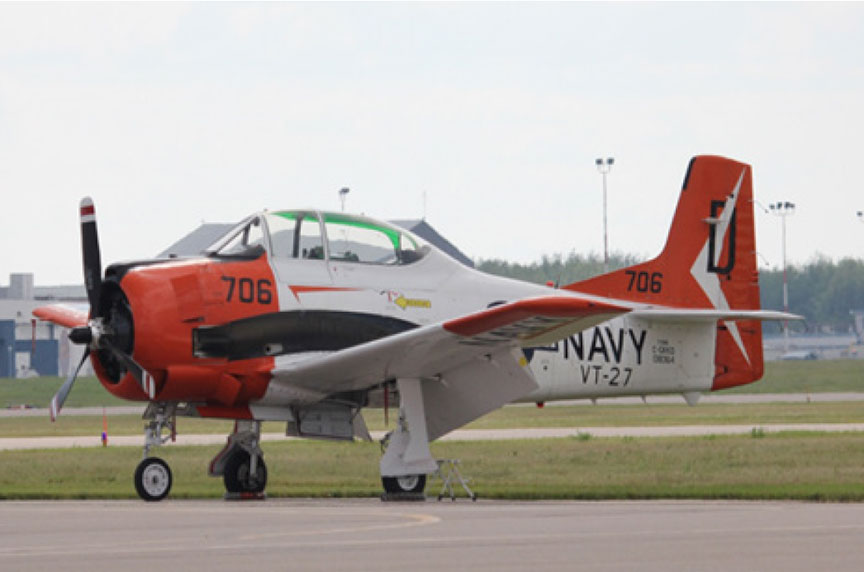Collision with terrain
North American Aviation Inc. T28-B, C-GKKD
Canadian Forces Base Cold Lake, Alberta
The occurrence
In July 2016, a North American Inc. T28-B aircraft, privately registered as C-GKKD, was taking part in an air show at Canadian Forces Base Cold Lake (CYOD), Alberta. On July 17, the aircraft impacted terrain during an aerobatic routine, and the pilot was fatally injured. There was no post-impact fire and no injuries to airshow personnel or spectators. There was minor damage to airfield infrastructure.
Media materials
News release
Investigation brief: Accident during 2016 Cold Lake Air Show, Alberta
Read the news release
Deployment notice
TSB deploys a team of investigators to the site of an aircraft accident in Cold Lake, Alberta
Edmonton, Alberta, 17 July 2016 - The Transportation Safety Board of Canada (TSB) is deploying a team of investigators to the site of an aircraft accident in Cold Lake, Alberta. The TSB will gather information and assess the occurrence.
Investigation information
Download high-resolution photos from the TSB Flickr page.
Class of investigation
This is a class 3 investigation. These investigations analyze a small number of safety issues, and may result in recommendations. Class 3 investigations are generally completed within 450 days. For more information, see the Policy on Occurrence Classification.
TSB investigation process
There are 3 phases to a TSB investigation
- Field phase: a team of investigators examines the occurrence site and wreckage, interviews witnesses and collects pertinent information.
- Examination and analysis phase: the TSB reviews pertinent records, tests components of the wreckage in the lab, determines the sequence of events and identifies safety deficiencies. When safety deficiencies are suspected or confirmed, the TSB advises the appropriate authority without waiting until publication of the final report.
- Report phase: a confidential draft report is approved by the Board and sent to persons and corporations who are directly concerned by the report. They then have the opportunity to dispute or correct information they believe to be incorrect. The Board considers all representations before approving the final report, which is subsequently released to the public.
For more information, see our Investigation process page.
The TSB is an independent agency that investigates air, marine, pipeline, and rail transportation occurrences. Its sole aim is the advancement of transportation safety. It is not the function of the Board to assign fault or determine civil or criminal liability.
